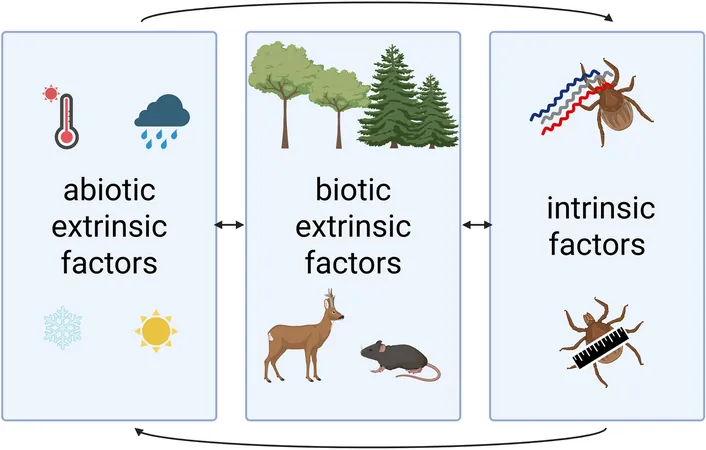
Unraveling the Tick Puzzle: How Age and Land Use Shape Lyme Disease Risks in Germany
2025-09-17
Author: John Tan
The Growing Lyme Disease Threat in Europe
Lyme borreliosis is the most commonly reported tick-borne illness in Europe, with annual documentation of 128,888 cases. Alarmingly, true estimates suggest the actual figure could reach as high as 850,000 infections each year. If left untreated, this disease can escalate from mild skin rashes to severe, chronic health issues affecting the joints, heart, and nervous system.
Diversity of Disease-Causing Borrelia Species
The culprits behind Lyme disease are various Borrelia genospecies within the Borrelia burgdorferi sensu lato (s.l.) complex, boasting over 20 genospecies, with at least 11 documented in Europe. The most concerning strains affecting humans include B. afzelii and B. garinii. Meanwhile, some Borrelia species, although present, are not considered pathogenic to humans.
The Ecology of Ticks and Their Hosts
The survival and distribution of Borrelia within tick populations are intricately tied to their reservoir hosts, often rodents and birds. This relationship, influenced by environmental conditions—like landscape and climate—determines which genospecies thrive in natural settings. Additionally, ticks are known to adjust their gene expression to suit different physiological environments, enabling them to colonize various hosts.
An In-Depth Study in Germany's Swabian Alb
Recent research conducted across 25 forest plots in the iconic Swabian Alb of Germany has focused on the impact of tick age and land-use types on the prevalence of Borrelia. The study examined nymphal ticks, measuring their age distribution against various ecological factors.
Investigating Tick and Wildlife Dynamics
The research team implemented multiple methods, including camera trapping for wildlife, tick collection, and genetic analysis of Borrelia in ticks. The study’s unique approach provided a comprehensive view of how both tick age and environmental contexts influence Lyme disease risks.
What the Findings Reveal: Tick Age and Infection Rates
Among the collected ticks, most were middle-aged, with notable correlations observed between tick age and Borrelia prevalence. Interestingly, while older ticks had a slightly elevated likelihood of carrying the bacteria, the overall impact of tick age on infection rates was less significant than anticipated.
Seasonal Variations and Land-Use Influence
The study also uncovered significant seasonal fluctuations in infection rates, with autumn showing the highest prevalence of Borrelia. However, land-use management did not noticeably affect the age distribution of ticks or their infection probability.
A Rich Tapestry of Borrelia Genetic Diversity
The research identified five distinct Borrelia genospecies, with B. garinii being the most prevalent, followed by B. afzelii. This genetic diversity is tied to various habitat types and mammalian host availability, emphasizing the complex interaction between land use and disease ecology.
Key Takeaways for Future Research and Public Health
This study not only sheds light on the intricate relationships between ticks, Borrelia, and ecological factors but also underscores the importance of informed land management in mitigating Lyme disease risks. With the rising incidence of Lyme borreliosis, ongoing research is critical to better understand and combat this health threat.


 Brasil (PT)
Brasil (PT)
 Canada (EN)
Canada (EN)
 Chile (ES)
Chile (ES)
 Česko (CS)
Česko (CS)
 대한민국 (KO)
대한민국 (KO)
 España (ES)
España (ES)
 France (FR)
France (FR)
 Hong Kong (EN)
Hong Kong (EN)
 Italia (IT)
Italia (IT)
 日本 (JA)
日本 (JA)
 Magyarország (HU)
Magyarország (HU)
 Norge (NO)
Norge (NO)
 Polska (PL)
Polska (PL)
 Schweiz (DE)
Schweiz (DE)
 Singapore (EN)
Singapore (EN)
 Sverige (SV)
Sverige (SV)
 Suomi (FI)
Suomi (FI)
 Türkiye (TR)
Türkiye (TR)
 الإمارات العربية المتحدة (AR)
الإمارات العربية المتحدة (AR)